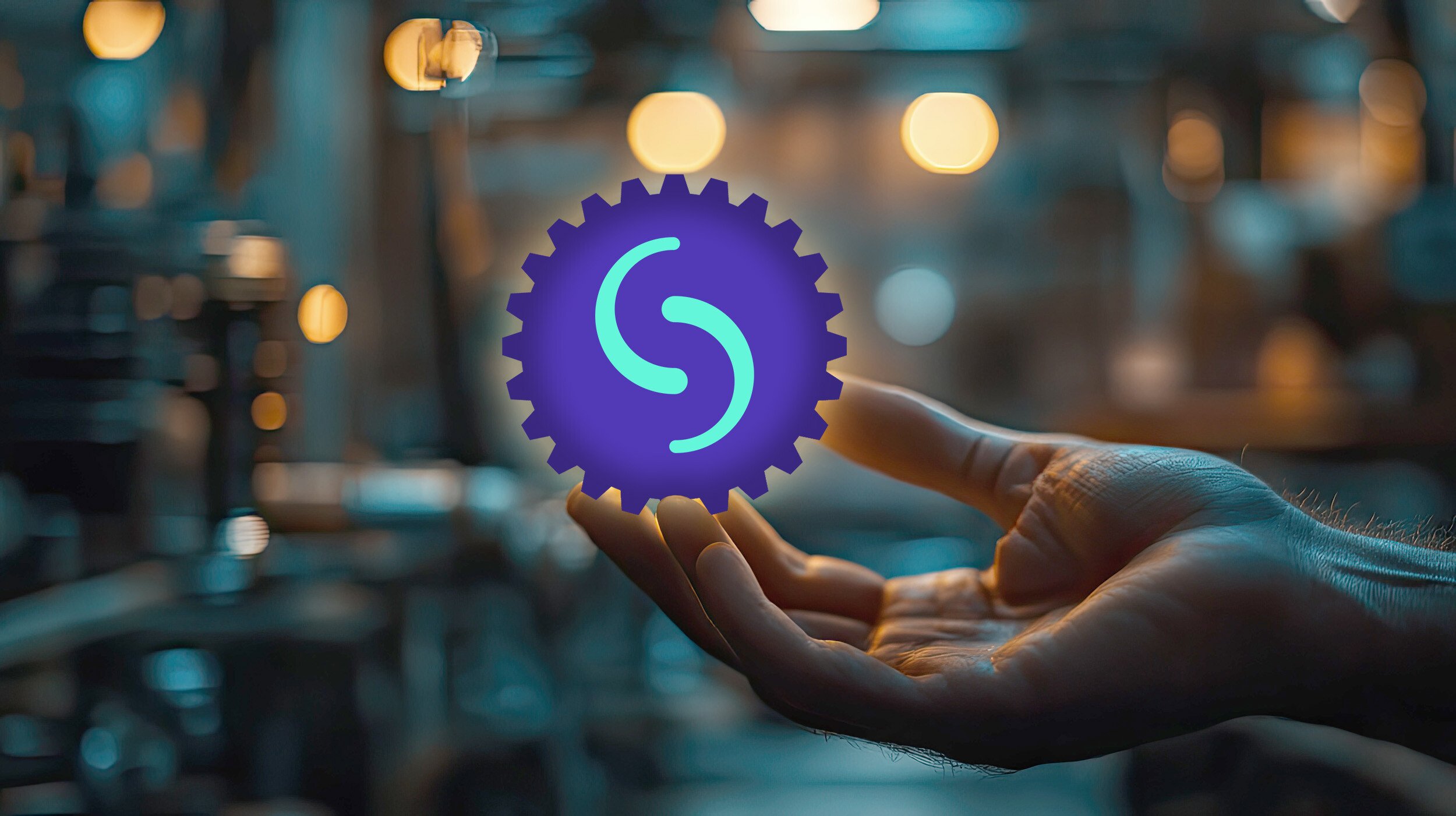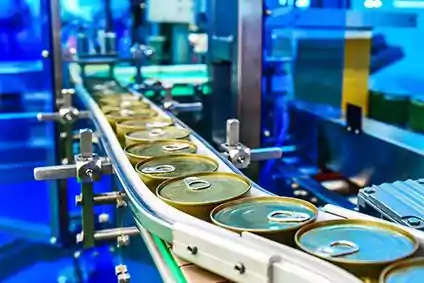Contents
Product development is the lifeblood of consumer packaged goods (CPG) companies, as groundbreaking new products can captivate consumers, win new market share and create lasting competitive advantage. One of the most exciting new trends in the CPG research and development (R&D) process is the use of artificial intelligence (AI) for better collaboration, innovation and time to market.
Improving collaboration and optimizing workflows with the help of AI isn’t just cool; it’s also financially sound. A Nvidia survey finds that 69% of CPG and retail leaders have increased annual revenue by adopting AI technologies, while 72% say AI has helped reduce operating costs.
Learn more about AI’s role in CPG R&D, the challenges of product development and how AI can transform the way your teams work.
3 benefits of collaboration in CPG research and development
R&D teams need access to specialized and specific information when developing products. This work often involves complex processes and systems that are too much for one person or even a small group to manage alone. Combining the efforts of teams is the only realistic way companies can effectively move through the stages of planning, research, development, testing, marketing and product release.
Here are three ways collaboration contributes to the CPG development process and improves product portfolios.
Streamlines workflows
Collaboration can help R&D teams unify a series of scattered workflows, bringing the organization and efficiencies required for getting products to market faster.
Identifying areas of overlap helps teams recognize where employees are duplicating each other’s research or working at cross-purposes. By connecting team members who are working on similar goals, they’re more likely to interact, share their findings and bounce ideas off each other.
Adds new perspectives
AI-powered tools can improve the R&D process by making expertise accessible across departments, disciplines and perspectives. Instead of silos, your employees can draw on internal expertise to better understand a project or how different approaches might work.
Asynchronous collaboration is vital for multinational companies whose R&D teams and other key employees might be scattered across geographies and time zones. With AI tools that categorize, analyze and share information, your teams can develop solutions that are well-rounded, comprehensive and commercially promising.
Culturally, by connecting people across locations and departments, you can generate and discover more ideas and foster faster decision-making. As employees get to know each other better, they build trust and feel more comfortable sharing their ideas, especially those that are potentially game-changing.
Promotes innovation and continuous improvement
Great R&D cultures are all about innovation and continuous improvement. Your people not only need the right information, they also need to know which subject matter experts can help them verify data, identify opportunities for improvement and test solutions.
Creating a culture that values communication and teamwork encourages employees to take sensible risks, test assumptions and quickly pivot when needed. This helps keep businesses agile, flexible and competitive in a rapidly changing landscape.
![[STRM] Interior image_3 ways collaboration improves CPG R&D](https://www.starmind.ai/hs-fs/hubfs/%5BSTRM%5D%20Interior%20image_3%20ways%20collaboration%20improves%20CPG%20R%26D.png?width=1200&height=630&name=%5BSTRM%5D%20Interior%20image_3%20ways%20collaboration%20improves%20CPG%20R%26D.png)
Common roadblocks to achieving synergy in CPG R&D
While collaboration offers clear benefits, teams can struggle to integrate diverse working styles, knowledge, experiences and skills. These challenges can take many forms, from interpersonal conflicts and communication breakdowns to conflicting priorities and limited access to information. Here are a few roadblocks that keep teams from collaborating as closely as intended.
Manual processes
Manual data entry, validation and sharing can be time-consuming and error-prone, causing delays and limiting the success of R&D projects. For example, an inaccurate accounting of formulation details or ingredients can create confusion, result in flawed products and lead to regulatory issues.
Information silos
Many companies lack a centralized source for trusted information, with information instead trapped in inaccessible systems or confined to certain people or teams. Without effective data-sharing, teams struggle to naturally collaborate — or even be aware of what they don’t know. This can result in delays in decision-making, duplicated efforts, and missed opportunities for collaboration and innovation.
Scalability challenges
As CPG companies grow, their needs and processes become more complex. R&D teams might lack enterprise collaboration tools or find that their existing technology can’t scale with the growing business.
Acquiring new technology can be expensive and time-consuming, with no guarantee of success. In the meantime, R&D teams can struggle to manage projects, data and processes.
7 ways to accelerate R&D collaboration by leveraging AI
As CPG brands shift their focus to what Deloitte calls “profitable volume,” they need to get products to market faster and increase sales without relying on price increases. AI is one way R&D teams can generate the collaboration, decision-making and quick reactions required for this shift.
Here are seven ways to leverage the power of AI to drive more effective teamwork throughout your development process.
Embrace data-driven decision making
Moving organizations to data-driven decision-making is a two-part process. Part one is a cultural recognition of data’s value. Part two is having the right technology in place. AI-powered tools can improve your organization’s ability to collect, analyze and distribute critical data such as customer feedback and market trends. With these previously inaccessible insights at people’s fingertips, teams can focus their CPG product development efforts on data-based processes and ideas.
For example, after more than 150 years in business, Campbell Soup Co. is using AI to track and analyze consumer data. These insights helped the company develop spicy product variations such as Frank’s RedHot Goldfish Crackers and Chunky Ghost Pepper Chicken Noodle Soup.
Improve visibility
AI-powered tools can help companies consolidate available information. This improves visibility for R&D teams and stakeholders in terms of product data, sales trends, market research and other data sources. With improved visibility, product managers have an easier time managing projects, and employees face less confusion about who’s doing what — or why. Teams can also learn from project data to make improvements in how they organize projects and workflows.
Save time with automation
One of the biggest benefits of AI-powered tools is the ability to automate time-consuming but important tasks. For example, algorithms can analyze global consumer behavior data and emerging skincare trends, compiling these insights into reports accessible in real time to all relevant departments.
As a result, chemists gain insights into trending ingredients and efficacy data, marketers better understand consumer preferences, and supply chain managers can predict demand patterns. This type of automation accelerates the development process while improving alignment and collaboration across teams, as everyone’s working with the same data.
AI-based efficiency could add up to $660 billion annually in productivity for the CPG industry across all functions, according to McKinsey research.
Create direct access to experts
AI-based tools can generate deep insights with greater efficiency than people, but they aren’t perfect, and they don’t always have access to the latest information or crucial details. That’s why also having access to subject matter experts is critical.
With Starmind’s AI-powered platform, employees spend less time searching for information. But when they need verification or additional insights, they can also access relevant subject matter experts within the organization. Starmind uses AI to analyze employee expertise and accurately identify and recommend internal experts who can best answer questions or otherwise add value.
Understand consumers better
AI tools are improving CPG market research by helping researchers quickly gather and analyze feedback from sources such as social media and customer reviews. R&D teams can use these insights to collaboratively refine product formulas, design, and development strategies.
For example, chemists might adjust formulations to align with insights about target market preferences for organic ingredients. Meanwhile, engineers work on packaging solutions that improve usability based on consumer feedback. At the same time, product strategists can assess how these changes affect product positioning and market entry strategies. Everyone is aligned on which data to use, with each group’s work contributing to each other’s success.
Leverage predictive analytics
Using AI-powered predictive analytics, CPG brands don’t have to wait for shifts in market conditions or consumer needs. They can proactively make product development decisions based on likely events and outcomes. Predictive analytics can also be used to forecast demand and optimize pricing, both of which drive revenue and margin.
Predictive analytics also helps R&D teams work better together. For example, data scientists can use predictive models to forecast consumer trends, which they can then share with engineers and designers. This integrated workflow makes it easier to share ideas and feedback, leading to data-driven insights reinforcing each stage of product development.
Improve simulation and modeling
R&D teams use simulations, modeling and scenario planning to understand how product concepts perform before going to market — or even to real-world testing. AI tools make this early-stage testing easier, including through virtual simulations that were previously cumbersome or unavailable. With these additional capabilities, CPG companies can optimize product and packaging designs and reduce the risk of product and market failure.
![[STRM] Interior image_7 ways to accelerate R&D collaboration by leveraging AI](https://www.starmind.ai/hs-fs/hubfs/%5BSTRM%5D%20Interior%20image_7%20ways%20to%20accelerate%20R%26D%20collaboration%20by%20leveraging%20AI.png?width=1200&height=630&name=%5BSTRM%5D%20Interior%20image_7%20ways%20to%20accelerate%20R%26D%20collaboration%20by%20leveraging%20AI.png)
Empower collaboration with enterprise AI solutions
CPG research and development teams know that information is essential to driving innovation. And with more information and knowledge generated than ever, these companies need better ways to collect, store, analyze and share that information. AI tools are increasingly important for organizations that want to optimize their CPG product development processes, better understand their business environment and share that knowledge across the enterprise.
Finding the right AI solution for your business requires working with a partner who can meet your specific R&D needs as a CPG company. Learn how Starmind helps CPG industry leaders such as PepsiCo R&D more effectively manage their teams and projects to accelerate innovation.



